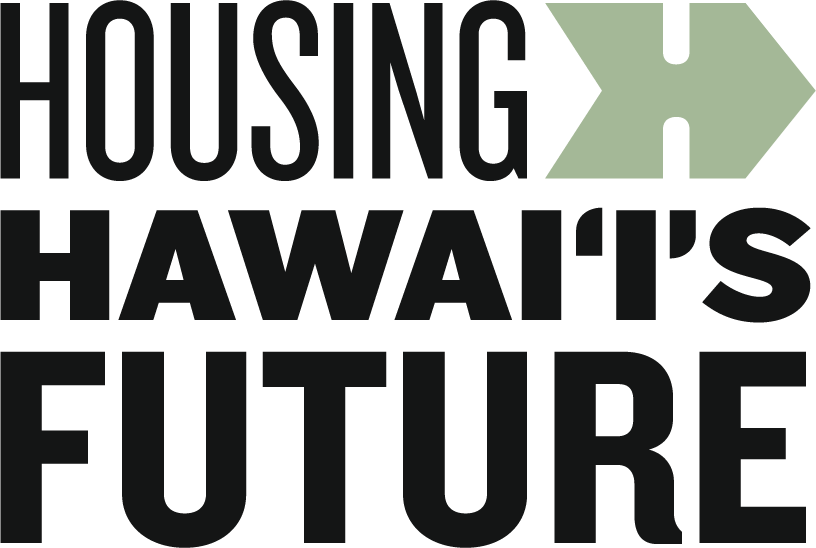A Point of Inflection: Feeling the Squeeze
The Hawai‘i State Capitol in 1973. The building has barely changed over the past fifty years. Source: U.S. National Archives.
Late last month, Housing Hawai‘i’s Future reached out to our community to share a simple truth: Hawai‘i won’t resolve fifty years of barriers to affordable workforce housing overnight.
We understand the mechanics informing this inconvenient truth of our chronic housing shortage, and so do those tens of thousands of Hawaii's young people feeling the built-up pressure of Hawai‘i’s housing squeeze.
Everyone can feel the squeeze. We feel the squeeze.
Both supply and stability must play a part in increasing housing access for Hawai‘i’s residents.
That leaves us with the million (actually, more of a few billion) dollar question: do our state legislators feel the squeeze?
It’s hard to say. As we write, the Hawai‘i State Legislature is nearing its midway point for the 2025 Legislative Session. As part of our efforts to track important housing policy ideas, Housing Hawaii's Future is prioritizing ideas that address the squeeze.
Legislation includes the following:
HB 739 - Deed-Restricted Kama‘aina Homes Program
Homeowners and buyers can join a deed-restriction program that commits the housing unit to a new, residents-only housing market insulated from national and international market pressures. This program offers financial aid in return for a promise: to keep that home available only for locals.
Deed-restriction programs preserve the supply of accessible workforce housing for local residents. Furthermore, the capital infusions provided through this program will flow directly into the pockets of program participants (i.e. residents). Local families will be able to directly invest in affordable housing. This approach benefits our residents and our communities.
HB 740 - Accessory Dwelling Unit Financing
It’s the same as HB 739, but HB 740 funds help build new housing through the construction of new Accessory Dwelling Units (ADUs). In case you don’t know, HHF advocated for the legalization of ADUs across Hawai‘i through Senate Bill 3202 of 2024, since signed into law by Governor Josh Green as Act 39, SLH 2024.
One year later, Hawai‘i still needs more ADUs. Through HB 740, we’re supporting ADUs for locals only through deed restrictions. By subsidizing the construction of new housing for only residents (barring any offshore demand through deed restrictions), we’ll be creating stability and boosting supply.
HB 1409 - County Incentives for TOD
It’s time to activate our state’s Transit-Oriented Development (TOD) communities.
Making housing more attractive near transit lines takes time. Incentivizing more housing through the Rental Housing Revolving Fund, a state fund established to finance the construction of workforce housing, is one way to make sure we build environmentally conscious, accessible communities across Hawai‘i. The most attractive place to build densely is along transit lines for multiple reasons: (1) businesses are within walking distance, (2) transit lines are already in place for people to get around, and (3) ... we’ve already invested in transit in these areas.
SB 38 - County Cost Controls
Under this new bill, county councils can't modify 201H-38 projects to raise costs.
What is 201H-38? In short, it is a term denoting any housing projects that receive exemptions through the Hawai‘i Housing Finance and Development Corporation (HHFDC) under Hawai‘i Revised Statutes 201H-38. Under this section, HHFDC may “develop on behalf of the State or with an eligible developer, or may assist under a government assistance program in the development of, housing projects that shall be exempt from all statutes, charter provisions, ordinances, and rules of any government agency relating to planning, zoning, construction standards for subdivisions, development and improvement of land, and the construction of dwelling units thereon.”
As part of the 201H-38 processes, a project must seek approval from the “legislative body of the county in which the housing project is to be situated.” This requirement only creates logjams for affordable housing projects. Historically, county councils often raise new demands on projects just before the finish line, even when all requirements are met. In turn. this makes homes more expensive (often for unnecessary reasons).
We’re providing you with these updates to give you a sense of where we stand.
In the meantime, check out these bills. A lot of other housing legislation is emerging at the mid-point of the 2025 Legislative Session.
And don’t worry—we’ll be in touch with more updates down the line.
Have some questions? Reach out to Perry Arrasmith, our Director of Policy, via email at perry@hawaiisfuture.org.

